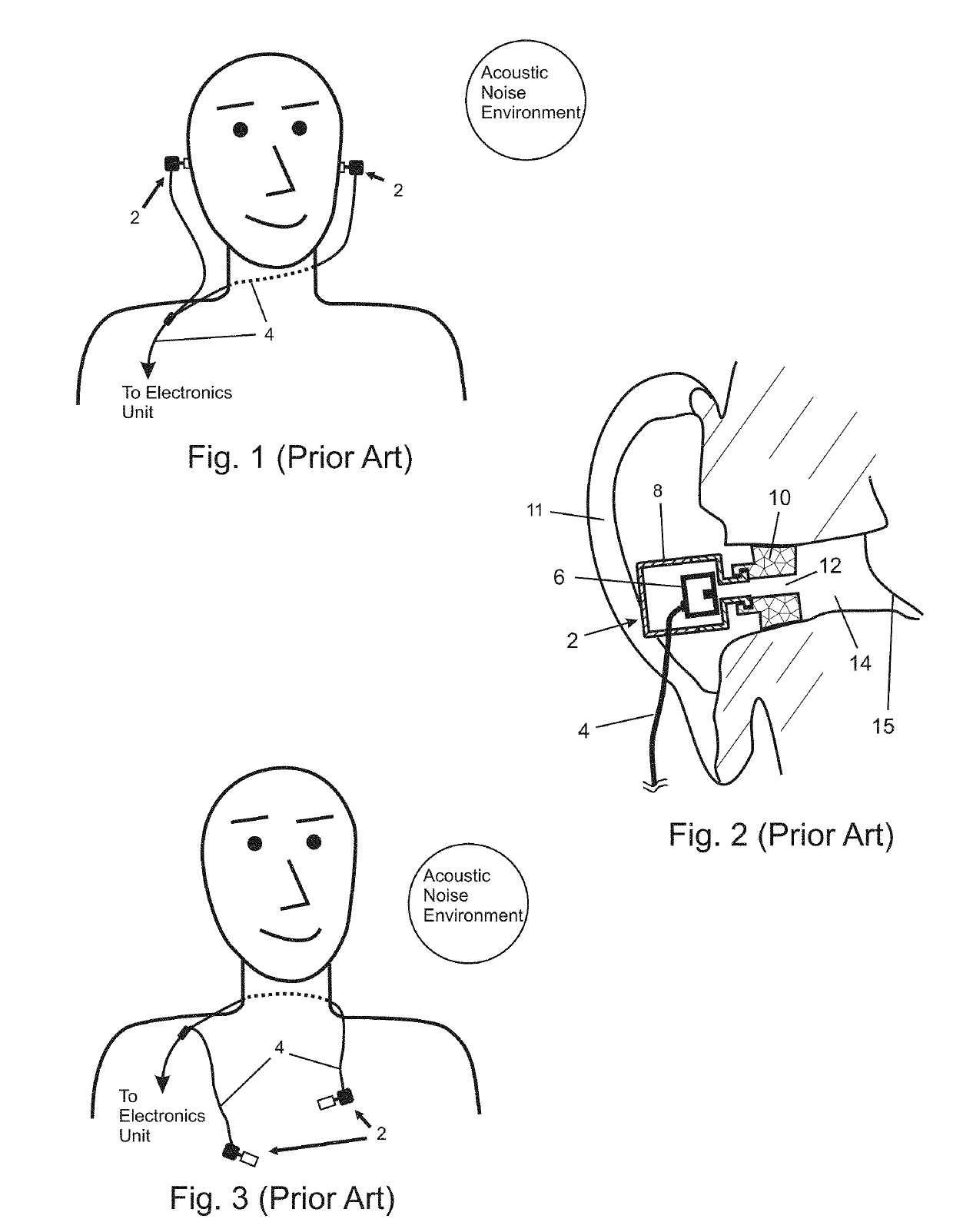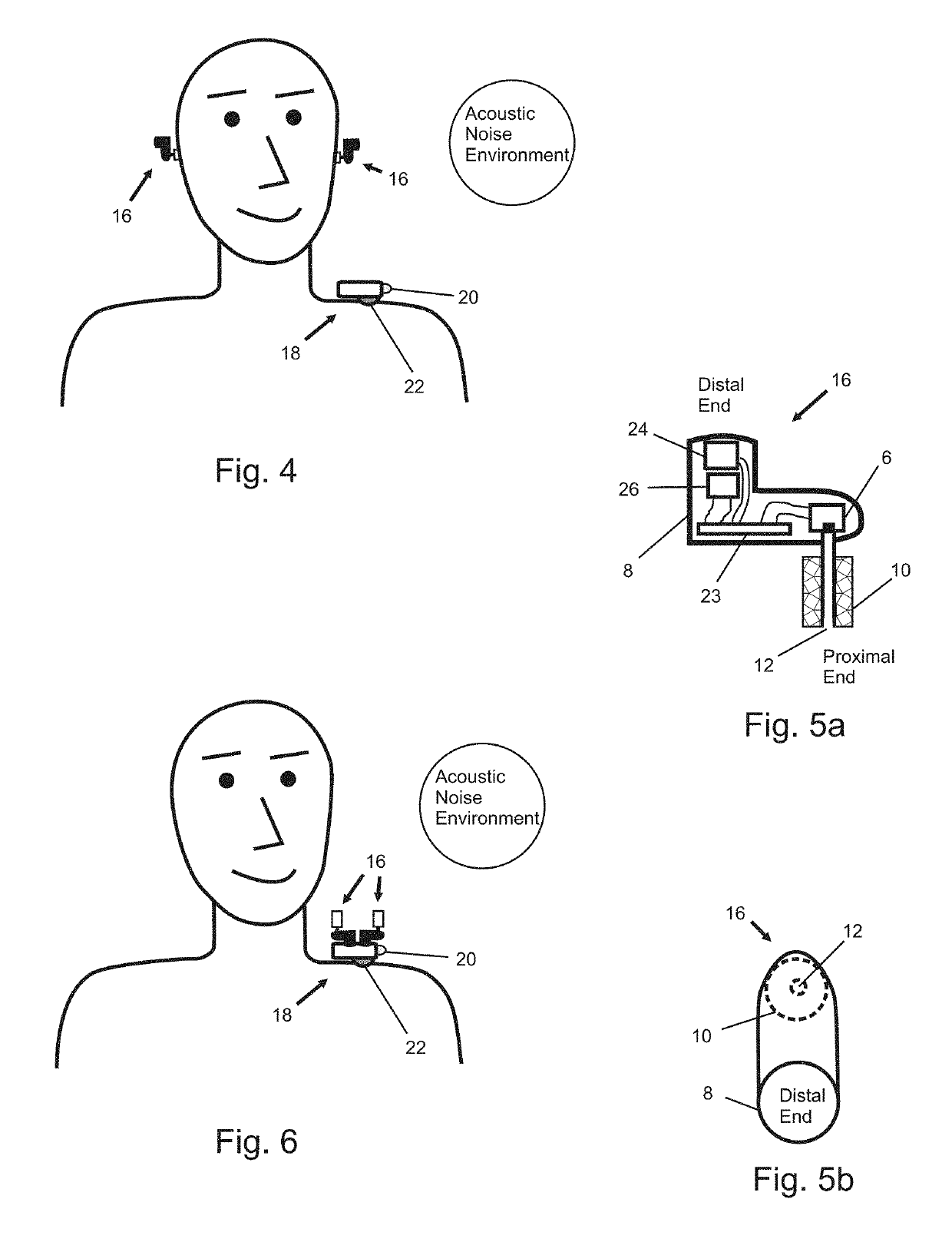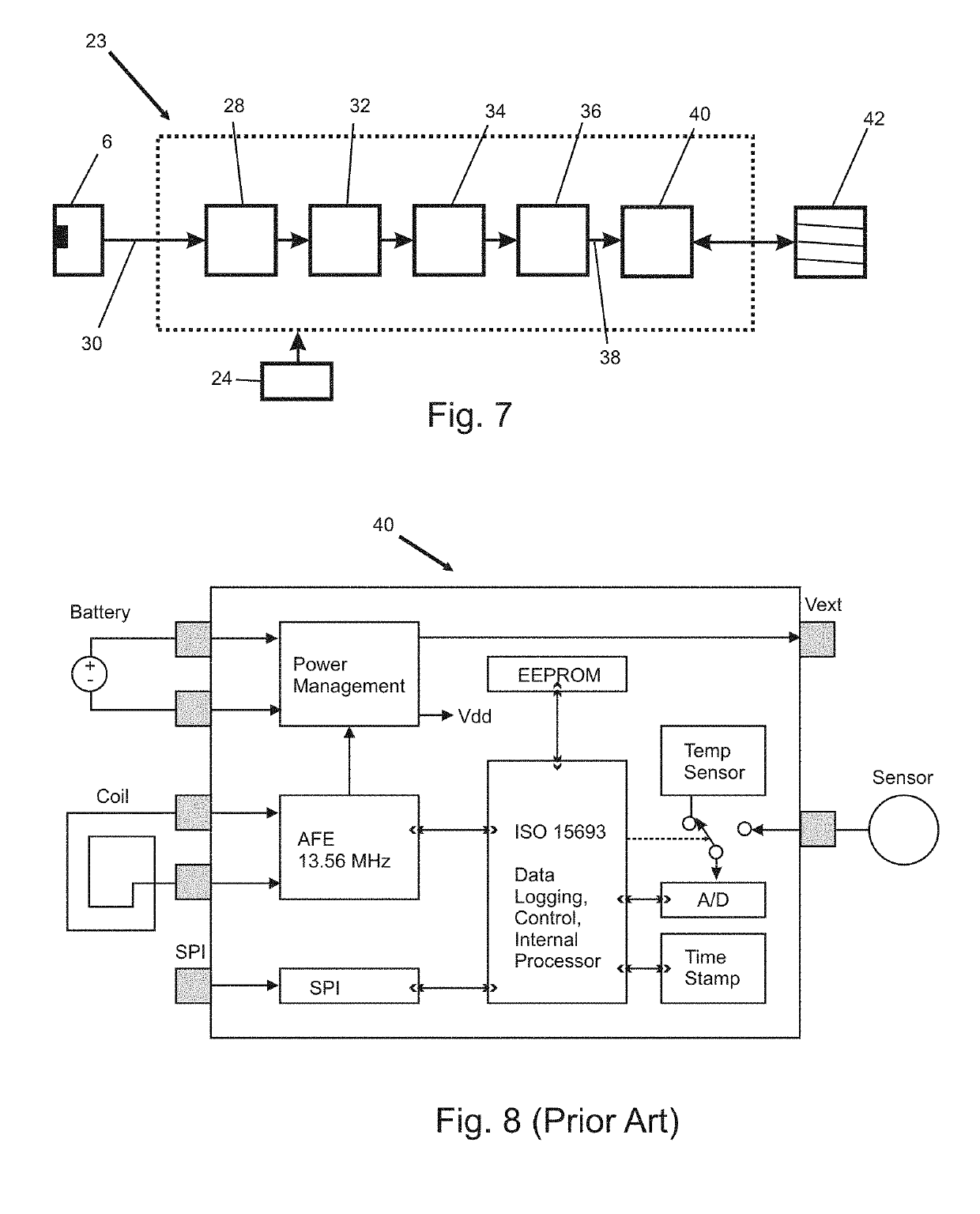In-Ear Noise Dosimetry System
a dosimeter and in-ear technology, applied in the field of measurement of sound levels, can solve the problems of complicated and expensive compliance with this standard, the difficulty of recording retention, and the involvement of professionals,
- Summary
- Abstract
- Description
- Claims
- Application Information
AI Technical Summary
Benefits of technology
Problems solved by technology
Method used
Image
Examples
Embodiment Construction
[0054]The in-ear dosimetry system of the invention provides improved functionality and performance and addresses the problems of wires, the difference in occluded versus unoccluded ear responses, earplug storage and proper location of noise dose monitoring when the earplugs are not in the ears. The system also provides improved feedback to the user concerning overexposure, and monitors the health of the worker by monitoring body temperature, which is also used to determine if the user is wearing the earplugs.
[0055]Wires are eliminated using novel wireless techniques. Occluded ear responses are accounted for by using a novel electronic filter, so that the difference between occluded and unoccluded ear responses when the earplugs are worn and not worn is also addressed using novel electronic filters and acoustic compensation devices. A novel storage device for the earplugs creates a simple and sanitary storage solution that also functions to locate the earplugs in the correct location...
PUM
 Login to View More
Login to View More Abstract
Description
Claims
Application Information
 Login to View More
Login to View More - R&D
- Intellectual Property
- Life Sciences
- Materials
- Tech Scout
- Unparalleled Data Quality
- Higher Quality Content
- 60% Fewer Hallucinations
Browse by: Latest US Patents, China's latest patents, Technical Efficacy Thesaurus, Application Domain, Technology Topic, Popular Technical Reports.
© 2025 PatSnap. All rights reserved.Legal|Privacy policy|Modern Slavery Act Transparency Statement|Sitemap|About US| Contact US: help@patsnap.com



